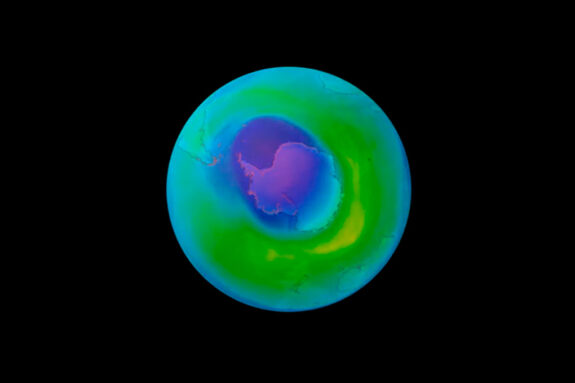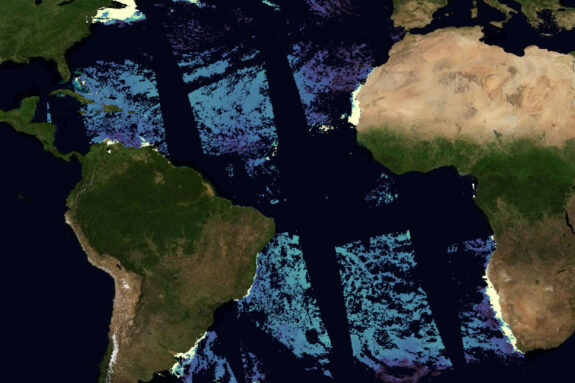After a three-year hiatus, the landmark MIT Astronomy Field Camp held during the Independent Activities Period (IAP) is finally starting back up again. This time, students will visit the island of Tenerife, located in the Canary Islands in Spain, to collect astronomical data using telescopes at the Teide Observatory. The goal of the camp is to give students a more robust feeling for the life of an observational astronomer beyond what they can learn in class.
“Here on campus we teach them the mechanics of how telescopes work. But when we take them to a professional observatory, we teach them more about the actual lifestyle and day to day workings of an astronomer,” explains Michael Person, a research scientist and lecturer in the Department of Earth, Atmospheric, and Planetary Sciences (EAPS) and Director of the Wallace Observatory.
As the lead instructor for the field camp, Person has helped steer the class in a new direction following its temporary suspension. Previously the camp, which first began in 1984, had been hosted at the Lowell Observatory in Arizona. But now that MIT has cemented a bond with the Instituto de Astrofisica de Canarias (IAC) through a collaboration behind the SPECULOOS Northern Observatory and its Artemis telescope at the Teide Observatory, they’re excited to start a new chapter in the camp’s history.
“This collaboration really is a platform to start seeding a forest of projects between our institutions for the long term,” says EAPS Assistant Professor Julien de Wit, the Principal Investigator of Artemis and who has helped Person coordinate with the IAC to make the new camp location possible.
While similar projects have been done at the Wallace Observatory, Person explains that it’s a different experience when you aren’t able to just collect your data and then go home. During the field camp, students will be spending their time out at the site and experiencing the flavor of the field, which “gets them really focused on whether or not they want to continue to pursue astronomy or do something else,” he says.
Person SB ’94, SM ’01, PhD ’06 has been closely connected with the astronomy camp; he first participated as an undergraduate student, and during his PhD he was a teacher’s assistant for the class five times.
“Learning how you take data from the sky, and then going off to an observatory and doing it and publishing the results, that really just set me on a path towards my current career,” he says.
The field of astronomy itself has changed over the 30 years since Person first took the class. Technological advances have drastically increased the amount of data that can be collected. When Person was a student, a few images on photographic plates could be taken each night that would later need hours to develop. Now, students can simply point to their target and take thousands of images in a matter of hours.
“That frees their minds up for thinking about the science and the analysis and what they’re actually learning, as opposed to lots of mechanical details,” says Person.
With less time spent on learning how to operate the telescope and more time on analyzing data, students will get the chance to develop their data science skills by working on a real astronomy project. They can either select from a list that has prepared ahead of time, or they can coordinate with MIT researchers or the scientists at Tenerife to help them with their own projects. Often students expand their research into their senior thesis or may turn it into a published paper, which looks great for graduate school applications. But what’s most important is that they pick a project that they’re interested in.
“That spark of investigating something you’re interested in is what drives it all forward. Once you’re interested in the topic, you pay more attention, you’re more focused, and you really can perform,” says Person.
This year applications will be limited to six students as they test run the new camp, but in time Person is hoping to expand the number to at least a dozen, with expenses covered so that students of all needs can still participate. Observational astronomy (12.410) is a prerequisite for those interested, and astronomy minor students have priority since the camp fulfills their thesis requirement.
In addition to their observational duties, students will also get the opportunity to explore the surrounding area, including facility tours of the nearby observatories, as well as the natural features of the island, including its geological features, forests, and beaches. This togetherness in a remote location is what makes the observational life so unique, according to de Wit.
“You are all together on top of a volcano, you share daily meals, ideas, observation tips,” he says. “It’s truly magical, otherworldly.”
The application period for the 2023 Astronomy Field Camp IAP is open through November 30th, 2022. If you are interested in applying, please contact Michael Person (mjperson@mit.edu) for more information.



